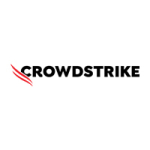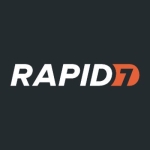How has it helped my organization?
I can rely on it. It does its job. I do not have to be on top of this. With the other product that we were using, I was constantly checking the application to see if everything was fine. It was more like I was doing the job. With the type of support that we have signed up with SentinelOne, I do not have to worry about that. I can rely on SentinelOne checking my endpoints, and if there is something, I know they are going to be on it. Previously, I had to call technical support to see what was going on. If they noticed something, I had to do the job. With SentinelOne, they are the ones who are checking the device and logs. If they notice something, they block it or do something about it, and then they let me know. I also receive notifications of the process they are following. I get various notifications saying:
- We identified this on this computer. This computer is disconnected. We are doing the next process.
- We have disabled this account.
- We have mitigated the problem, or the problem has not been mitigated.
- We have identified this as being something that you do not have to be concerned about.
- You need to be concerned about this.
With the level of support that we are getting, I do not have to do it myself. Previously, I had to do it or somebody else in the team had to constantly check our endpoints. With SentinelOne, we do not have to do that.
The Singularity console provides a unified view. It is very important because we can see all our devices. We can see what is going on. It is very good. I like it.
It is not at all difficult to manage our environment using the Singularity console. Once you get familiar with the different tabs of the web console, it is easy to manage. It is very organized and descriptive. You do not get lost. What they have in the titles is what you see, so it is not at all difficult. It is very easy to use.
It does a great job of providing visibility. Management asks us for a lot of reports to know how well the systems are protected. It is easy to manage and get reports so that we can give them better visibility into what is going on. We can get reports on the fly to show what is going on. In terms of visibility, it is doing a great job.
It has done a great job when it comes to detection because there have been a couple of instances where users installed applications or tried to install applications and the system detected them immediately. It triggers an alert for us within seconds of a user trying to download or install an application. They also immediately try to remediate the problem at the same time. In terms of detection and protection, it is doing a great job.
What is most valuable?
They have different levels of support. We have the highest level where they are constantly checking all the endpoints. If at any certain point, they identify that a computer has been triggered by a virus, a link, or something else, they would automatically tell us that within 15 seconds. If they notice something, they automatically send us an email saying that they noticed something in the computer, and they are going to block it. If they identify that there is something wrong with the computer, they automatically block it. This constant checking of anything that may be happening on our endpoints is the most valuable feature of SentinelOne.
What needs improvement?
I would like to have the option to deploy or push an update on all my endpoints at the same time. I am not aware of such a feature being there. I have not seen it, but it would be good to be able to deploy or push an update on all my endpoints at the same time. Our company has different locations, such as Sunbury, Oklahoma, and Alabama. I have my devices by location, and I have not found a way to choose all the endpoints and then push the update automatically. I have been doing it one by one. We probably have to create a policy so that I can push it. That is the only thing that I do not like. I would like to have a button to update all the endpoints with a simple click. I have not yet seen that in this product.
For how long have I used the solution?
We have been using it since March of this year.
What do I think about the stability of the solution?
It is very stable. We did not have any issues.
What do I think about the scalability of the solution?
Its scalability is great.
How are customer service and support?
Their support has been great. I do not know whether it is because of the type of support that we have. We have the highest level of support. There are different levels of technical support that you can get. We have got the highest one, and they are available 24 hours a day and 7 days a week. I know there are other options where we can get support from Monday to Friday from 8 to 5 or something like that, but because of the number of employees that we have in the IT department, we need to have more support. We do not have a lot of people. We are shorthanded, so we decided to get the highest level so that we can rely on SentinelOne to keep an eye on our devices 24 hours a day. If there is something going on, they contact me. Whenever I have the need to call them, I just open a ticket or call them, and they call me back right away. It is almost instant. In 5 minutes, I get a follow-up email. They reply quickly, and if they need to talk to me, they call me. It has been a great experience. I would rate them a nine out of ten. They are perfect.
How would you rate customer service and support?
Which solution did I use previously and why did I switch?
We first used SentinelOne about five or six years ago. At that time, we switched from a major brand's antivirus to SentinelOne. We had SentinelOne on-premises, but it was not as good as it is now. It was not doing its job, and that is the reason we switched to Trend Micro.
We were using Trend Micro, and we had a bad experience with that product. They did not get the virus that we were hit with. The contractor we had mentioned SentinelOne. We gave it a try during that period when we were having this big issue at the company. We just started installing the application on all the endpoints. It was a great hit because the product was able to find all the computers that were infected. We were able to clean them. Especially during that time, we were able to narrow down the computers that were infected, and then we were able to remove them from the network. It was a great product. They helped us get all the policies set up for our account, so whenever a computer was connected to the network, it would automatically identify if the computer was affected, and then it automatically removed it from the network. It was a great thing for us because it saved us a lot of time from checking every single computer. That was the major experience that we had with this application. SentinelOne Singularity helped us clean up, identify, and block any computer that was infected.
When this contractor told us about SentinelOne, I was a bit skeptical because we had used SentinelOne before, and it was not doing its job. They told me that they have used it with other clients, and they are recommending it as one of the topmost solutions. They had seen SentinelOne catching a lot of viruses and threats with other customers. The contractor sold us the idea that they were doing a good job. We decided to give it a try, and I am glad that we did that because we do not regret it. Because we were in a very difficult time during that time, it was a matter of having something quick and easy to install and deploy. He was a partner of SentinelOne, and he was able to get us into SentinelOne within hours. It was very easy to deploy. We were able to push it to all our endpoints, and about a month later, we were able to get our own licenses through CDW, so the main reason was that it was very easy to install and deploy. We could get all the licenses together with the support.
I have not had much experience with Windows Defender. There are two versions of it. There is one that comes with the Microsoft Windows operating system, and there is also one with a paid license through Microsoft. There are two different ones. The one that comes with the Microsoft Windows operating system is not an antivirus, so I would not trust it. If it is the one with a paid license with Microsoft, it is very good. I have a little bit of experience with that, but so far, SentinelOne is one of the best ones that I have used. I would not recommend Trend Micro. It is terrible as an antivirus, but for email security, it is good. SentinelOne definitely has been one of the best ones I have seen so far.
How was the initial setup?
The setup of Singularity was straightforward. SentinelOne's support was there, and we also had a contractor who had more experience with the setup process, so it was straightforward. The deployment was a smooth process.
The setup of Ranger AD and other products has been more challenging because we have not had the time to completely deploy them. It is a problem on our side because we have not had the time to get it completely done. We have to install a lot of clients from the server and do configuration and all that, but the support that we have had from SentinelOne has been good. They are on top of things, and they are always following up with us to get this completed and schedule something. When we schedule something with a technician from SentinelOne, they are always available. There are a lot of different time slots to work with them. They work around our schedule. That is a good thing.
What about the implementation team?
We had the help of SentinelOne and a contractor. For the deployment, there were probably two people from our side. We were just asking the concerns or questions that we had on the system, but it was very easy. Most of the time, the setup of Singularity was done through our contractor and me.
What's my experience with pricing, setup cost, and licensing?
Its price is a little bit high. It is a nice product, but it comes at a cost. Compared to other products, it is not cheap, but you sometimes have to pay for the value you get. It is not cheap, but it is worth it.
It also depends on how many licenses you have. It becomes pricey because we not only have Singularity; we also have Ranger AD. We have three or four products from SentinelOne, so it becomes pricey for us, but at this point, safety comes first for us.
What other advice do I have?
It is a product that you can rely on. This is the first endpoint solution that we have seen doing its job. Based on the experience that we have had, this is the best product that we have seen.
Overall, I would rate it a nine out of ten.
Disclosure: PeerSpot contacted the reviewer to collect the review and to validate authenticity. The reviewer was referred by the vendor, but the review is not subject to editing or approval by the vendor.



















